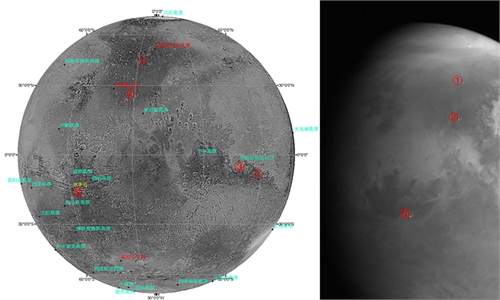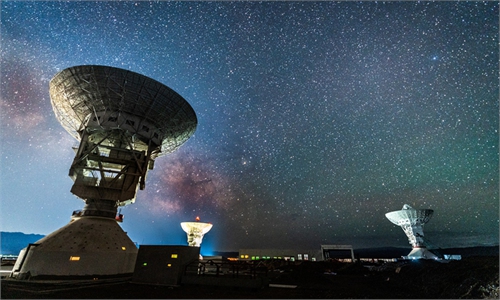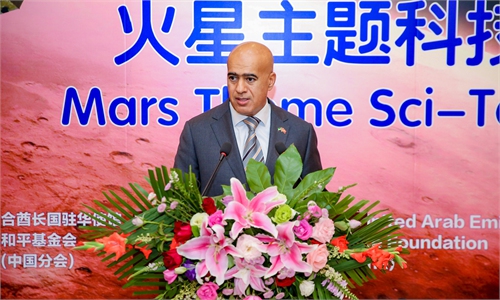Experts confident for Tianwen-1's upcoming Mars orbital insertion despite unprecedented challenges
Experts confident for Tianwen-1's upcoming execute Mars orbital insertion despite unprecedented challenges
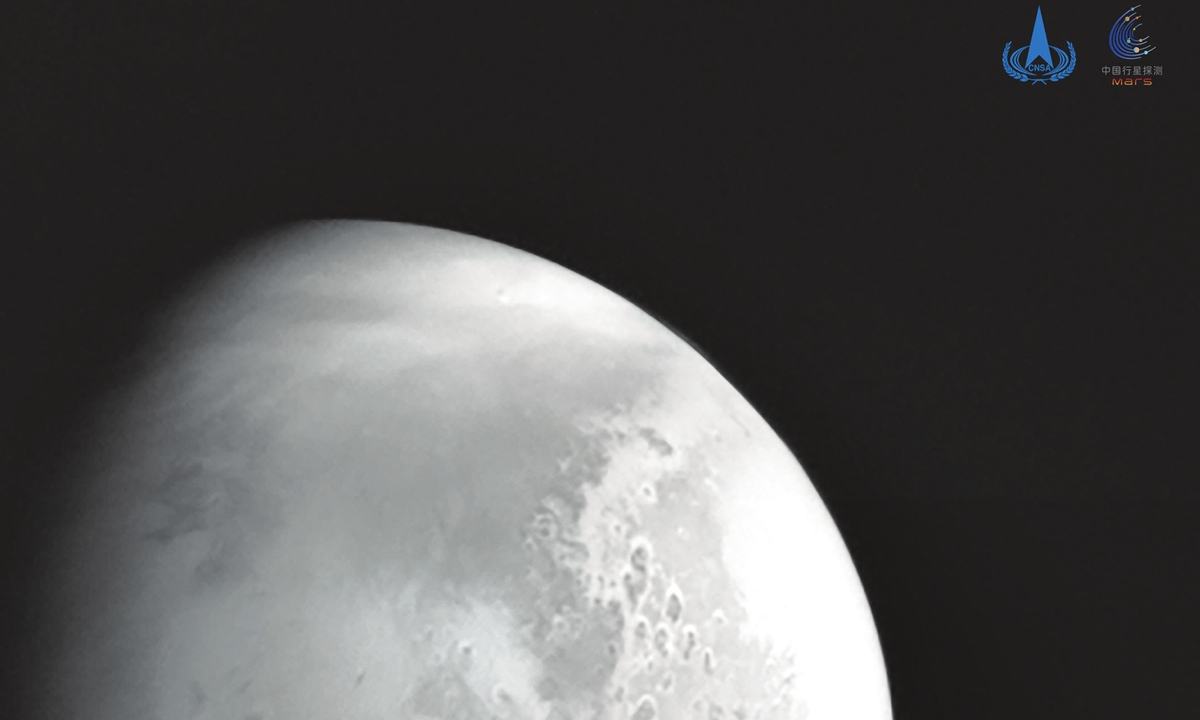
The China National Space Administration (CNSA) released the first image of Mars taken by China's first ever Mars probe Tianwen-1 on Friday. The black-and-white photo was taken about 2.2 million kilometers from the Red Planet, according to the CNSA. Tianwen-1 is expected to arrive in the gravity field of Mars and carry out a braking maneuver around February 10, a day before Chinese New Year's Eve. Photo: VCG
Carrying high hopes of stargazers from around the world, Tianwen-1, China's first Mars probe, is expected to soon arrive in the scope of Mars and carry out an orbital insertion, which is a key yet challenging maneuver to conclude its seven-month instellar cruise to the Red Planet.
Such exciting moment could come as soon as on Wednesday night, according to sources close to the matter, a day before the Chinese New Year's Eve, and the success of which, without any doubt, would bring tremendous joy and pride to Chinese people who are celebrating the Chinese New Year on home planet Earth.
As the five-ton spacecraft will burn of its engines to slow the vehicle down enough to be captured by Mars' gravitational pull, Chinese space experts contacted by the Global Times on Tuesday expressed high confidence over the upcoming Tianwen-1 mission milestone of Mars orbital insertion, saying that the country's repeated success of Chang'e lunar probe missions that include similar orbital insertion stage has provided valuable experience.
However, there are many factors that would add to the high stakes of the Tianwen-1 near-Mars maneuver.
The distance between the moon and Earth is about 360,000 to 400,000 kilometers, while the distance between Mars and Earth is 56 million to 400 million kilometers. The longest distance between Earth and Mars is 1,000 times that between Earth and moon.
The much longer distance equates to a considerably delay in communication, which could be as long as 10 minutes, meaning that the spacecraft will need to carry out commands to start the braking burn by itself, with instructions sent in advance from the Beijing Aerospace Control Center, to clear tasks including adjustment of attitude, Pang Zhihao, a former researcher at the China Academy of Space Technology and space science author, told the Global Times on Wednesday.
The largely automatic braking burn will be a deciding step for Tianwen-1's Mars orbital insertion, as if it is too slow it will slum crash to the Mars, and if it is too fast, it fly pass and miss its target, Pang explained.
As the Mars orbits more distant from Sun than the Earth does, the solar energy supply to the spacecraft will be another issue, adding complexity to the maneuver, Pang added.
As of June 2020, there have been 44 attempts of human Mars exploration and more than half of them failed. Countries including the former Soviet Union, the US and Japan all experienced failure experiences in their attempts to enter the Mars orbit, experts said on Wednesday, highlighting the difficulty of Mars rendezvous.
The China National Space Administration (CNSA) on Friday released the first image of Mars that Tianwen-1 snapped from a distance of 2.2 million kilometers from Mars.
And according to the CNSA, the probe conducted its fourth orbital correction at 8 pm on Friday, aiming to ensure that the probe achieves a sound planned rendezvous with Mars.
All probe systems are in good condition, the space agency said.
China launched the Mars probe on July 23, 2020, which was designed to complete orbiting, landing and roving in one single mission.
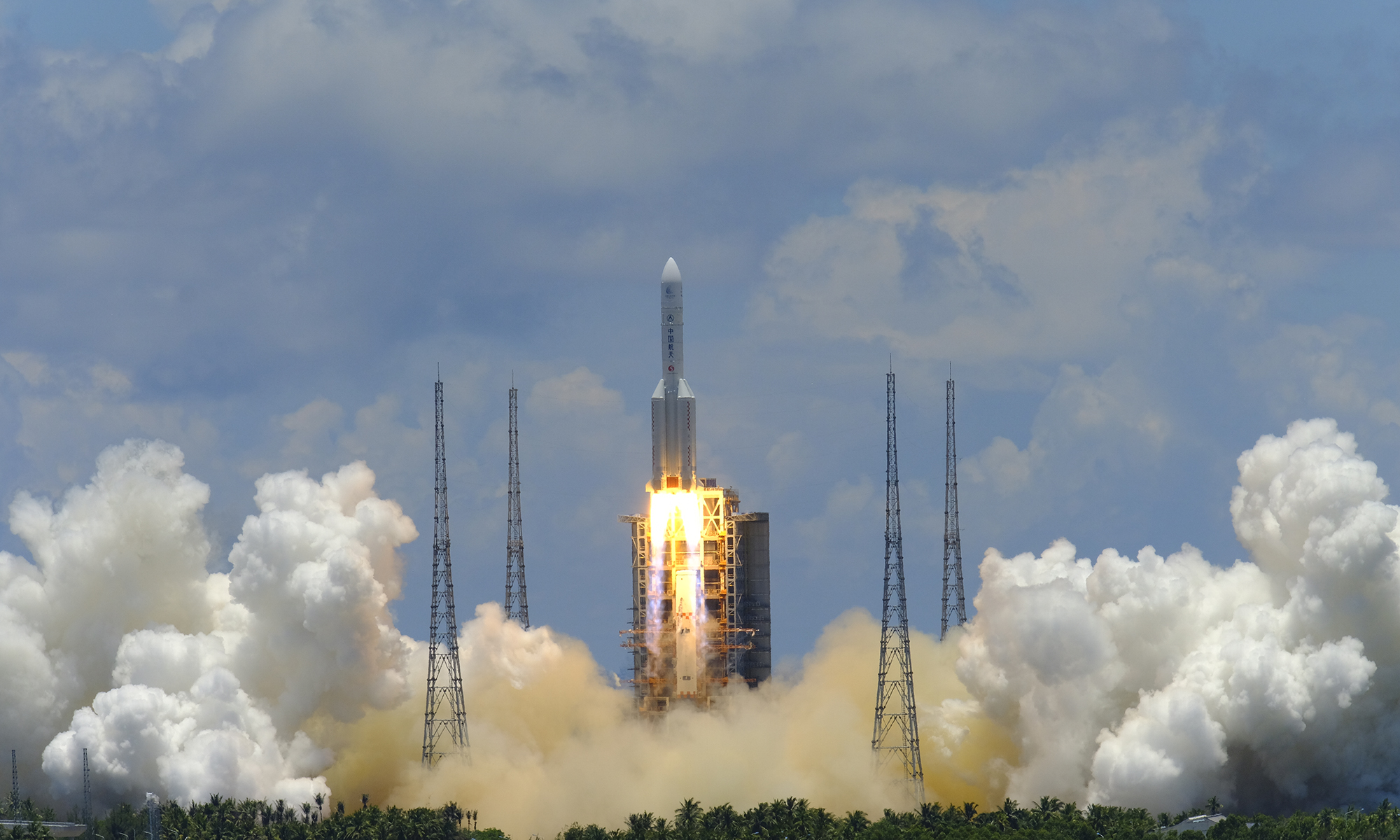
China successfully launched its first Mars probe, named Tianwen-1, via a Long March-5 Y4 carrier rocket from Wenchang Space Launch Center in South China's Hainan Province into planned orbit on July 23. Photo: Guo Wenbin/Our Space
Taking on the same Earth-Mars marathon after launching last year, spacecraft from the United Arab Emirates, China and US will reach Mars one after another in February.
The UAE car-sized Hope orbiter is expected to arrive in Mars orbit on Tuesday and will spend nearly two years surveying the planet's atmosphere to study daily changes in Martian weather.
If successful, UAE will be the first Arab nation to deploy an interplanetary probe.
After orbiting the Mars for about three months, China's Tianwen-1 will deploy a lander and rover bundled together for a landing at Utopia Planitia around May.
Global Times learned from China's space authority that the Tianwen-1 sets out to achieve a slew of scientific goals including study the morphology and geology of the planet and Mars atmosphere ionized layer, surface climate and environment.
In another development, the US NASA's Perseverance rover is expected to touch down on February 18 at the Jezero Crater, the site of an ancient river delta believed to bear traces of past life. Its touchdown location is some 1,600 miles away from China's rover, American technology news website The Verge reported. This is NASA's ninth mission to the Martian surface.

